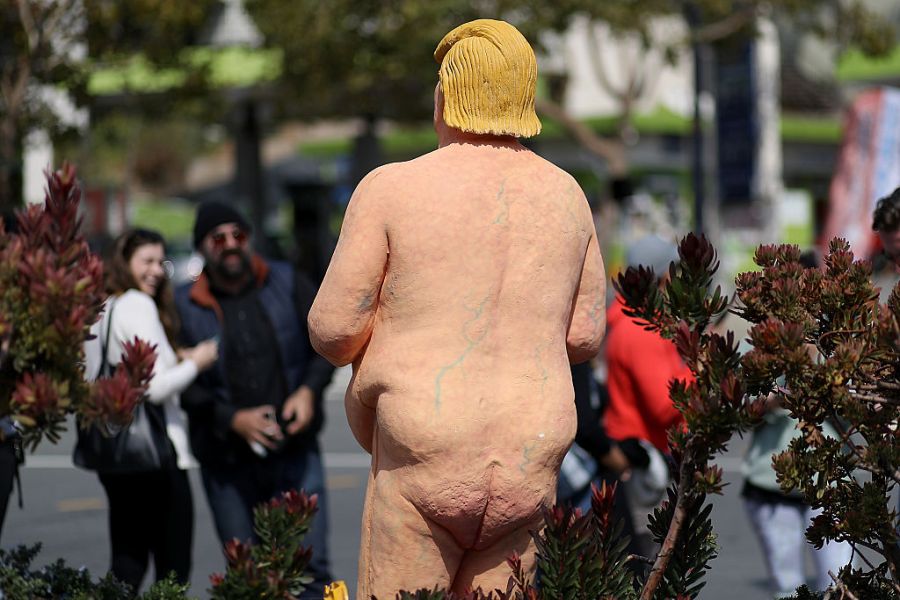The US presidential campaign was a bitterly fought affair, beset by slurs and scandals. The art it inspired was similarly provocative, with scathing attacks on the two leading candidates made in the form of sculptures, sketches, and stencil graffiti. The majority of the scorn was directed at Donald Trump, yet these creatives, like all other critics of Trump, failed to keep him out of the White House – and understandably so. Most anti-Trump art favoured mockery over scrutiny, and preached to the converted rather than the undecided.
In many of the most notorious works, Trump’s physical features were mimicked or distorted for comedy. The Trump Hut and Hanksy’s Dump Trump imitated his sweeping hair, while Illma Gore’s Make America Great Again and Indecline’s The Emperor Has No Balls stripped him naked and altered his genitalia, inviting the audience to consider whether such emasculation should be seen as humiliation. Between them, the works exposed the artists to legal threats, physical assault, and accusations of body-shaming, but barely dented Trump’s reputation.
As Carey Dunne has argued, this preoccupation with humour distracted from Trump’s divisive policies and behaviour. Even artists who did tackle serious issues tended to share a proclivity for punchlines. Plastic Jesus’s Hollywood Star fence and t.Rutt’s cinder block wall both wryly parodied Trump’s isolationist plans for the Mexico-US border, but failed to provide a compelling argument for voters to latch onto. As a result, these artworks all reinforced Trump’s message that the derisive liberal elite saw him – and by extension, his supporters and their priorities – as a joke.
However critical of Trump an artwork may have been, he still stood to benefit from its circulation. Michael Kruse has suggested that his campaign thrived by harnessing the ‘dark art of bad publicity’, which ultimately proved a winning strategy. Regular controversy was rewarded with a platform and billions of dollars worth of free media coverage. By playing a role, however small, in this inflation of air time and column inches, anti-Trump art may have undermined its own goal.
The protests that immediately followed Trump’s triumph suggest that his time in office will be characterised by a high level of vocal grassroots opposition. If artists focus their efforts on dismantling Trump’s policies and appealing sincerely to those who voted for him, they have a far greater chance of shaping public opinion over the next four years. If they continue to rely on cheap shots and playground taunts, though, President Trump is likely to have the last laugh.
